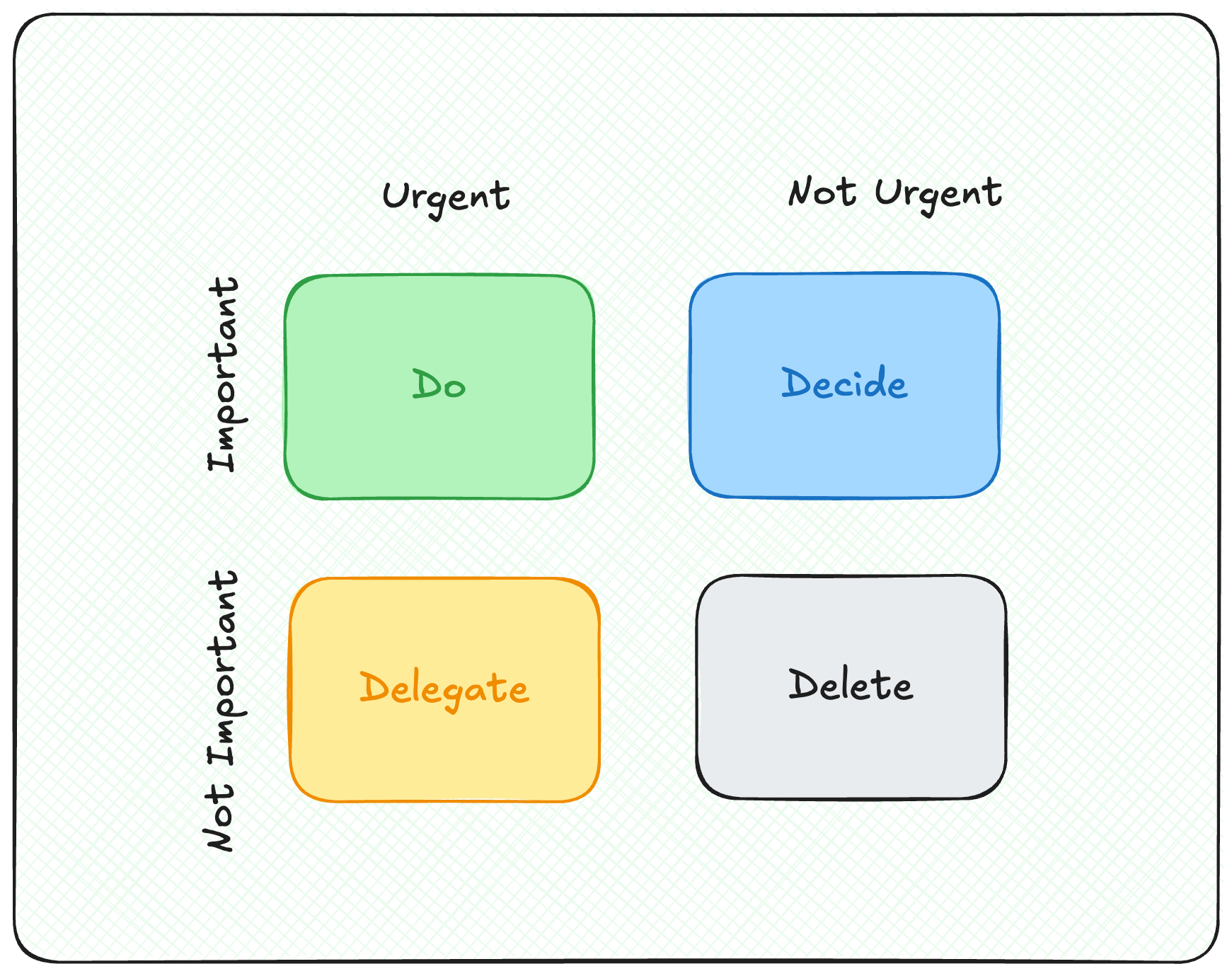- Published on
Time Management Hacks for Team Leaders
Time Management Hacks for Team Leaders
Being a team leader means juggling multiple responsibilities, from project deadlines and team performance to strategy planning and stakeholder communication. With so much on your plate, effective time management isn’t just a skill—it’s a necessity. Here are some tried-and-tested time management hacks to help you lead more effectively while maintaining balance in your day.
1. Prioritize Like a Pro: Master the Eisenhower Matrix
Not all tasks are created equal. To manage your time effectively, use the Eisenhower Matrix, which categorizes tasks into four quadrants:

- Urgent and Important: Do these immediately.
- Important but Not Urgent: Schedule these for later.
- Urgent but Not Important: Delegate these.
- Neither Urgent nor Important: Eliminate these.
This method helps you focus on high-impact activities and avoid wasting time on unimportant tasks.
2. Time Block Your Day
Time blocking is a powerful technique where you allocate specific time slots for different tasks. For example:
- Morning: Team check-ins and status updates.
- Midday: Deep work on priority projects.
- Afternoon: Responding to emails and attending meetings.
- End of Day: Reflecting and planning for tomorrow.
By dedicating focused blocks of time to specific activities, you minimize distractions and ensure every hour is productive.
3. Delegate with Confidence
One common pitfall for team leaders is trying to do everything themselves. Delegation not only frees up your time but also empowers your team members to take ownership. To delegate effectively:
- Match tasks to your team members’ strengths.
- Provide clear instructions and deadlines.
- Trust your team and resist micromanaging.
Remember, delegation is an investment in your team’s growth and your own efficiency.
4. Embrace Technology for Automation
Leverage tools and technology to automate repetitive tasks and streamline workflows. Here are a few examples:
- Project Management: Tools like Asana, Trello, or Monday.com to track progress.
- Communication: Slack or Microsoft Teams for quick updates.
- Scheduling: Calendly or Google Calendar for planning meetings.
- Task Automation: Tools like Zapier to connect apps and automate workflows.
Automation saves time, reduces errors, and ensures consistency.
5. Say “No” Strategically
As a leader, you’ll often face competing demands for your attention. Learning to say “no” diplomatically is critical. Before agreeing to any task or meeting, ask yourself:
- Does this align with my priorities?
- Can someone else handle this?
- Is this the best use of my time?
Saying no to non-essential activities helps you focus on what truly matters.
6. Plan Tomorrow Today
End each day by reviewing your accomplishments and planning for the next. This could include:
- Listing top priorities for tomorrow.
- Reviewing your schedule for upcoming meetings or deadlines.
- Reflecting on what went well and what could improve.
This habit sets a clear focus for the next day and reduces morning stress.
7. Use the 2-Minute Rule
Adopt the 2-Minute Rule for small tasks: If something takes less than two minutes to complete, do it immediately. Examples include replying to a quick email, approving a document, or signing off on a request. This prevents small tasks from piling up and overwhelming your schedule.
8. Limit Meeting Time
Meetings are often time-consuming. As a leader, take control by:
- Setting clear agendas and objectives.
- Limiting meetings to essential participants.
- Using time limits (e.g., 30-minute stand-ups instead of 1-hour discussions).
- Following up with concise action items.
Shorter, focused meetings boost productivity and respect everyone’s time.
9. Leverage Your Team
Encourage your team to take initiative and problem-solve independently before escalating issues to you. Create a culture where team members:
- Collaborate and brainstorm together.
- Use decision-making frameworks to resolve problems.
- Keep you informed only about critical issues.
This empowers the team and reduces unnecessary interruptions in your day.
10. Take Care of Yourself
Lastly, remember that time management isn’t just about work. To lead effectively, you need to be at your best. Prioritize:
- Taking regular breaks to recharge.
- Staying active and maintaining a healthy lifestyle.
- Setting boundaries to avoid burnout.
A well-rested and focused leader is far more productive than one constantly overwhelmed.
Conclusion
Effective time management is the backbone of great leadership. By prioritizing tasks, delegating wisely, and leveraging technology, you can focus on what matters most—empowering your team and achieving your goals. Remember, time is finite, but with the right strategies, you can make every moment count.
What are your favorite time management hacks? Share them in the comments below!